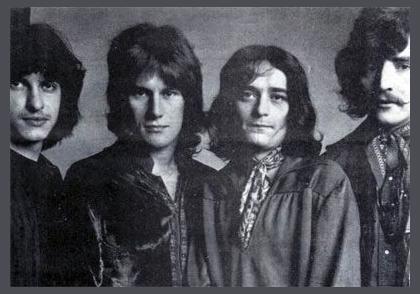 Ten Years After
Ten Years After
Ten Years After: A Legacy of Soulful Rock
Ten Years After, a legendary British rock band, has left an enduring mark on the music industry with their distinctive blend of blues, rock, and soul. Known for their electrifying live performances, they emerged as one of the most revered bands of the 1960s and 1970s.
Origins and Formation
The band's origins can be traced back to 1967 in Nottingham, England. Alvin Lee (guitar and vocals), Chick Churchill (organ), Leo Lyons (bass), and Ric Lee (drums) came together to form a group initially named The Blues Yard. Inspired by the likes of B.B. King and Otis Redding, they honed their craft through relentless gigging.
Challenges and Controversies
Ten Years After faced their fair share of challenges during their formative years. They struggled to gain recognition beyond their local circuit and encountered financial difficulties. However, their relentless determination and infectious live performances gradually gained them attention.
In 1969, a minor controversy erupted when Alvin Lee was photographed wearing a Confederate flag belt buckle during a concert in the United States. Lee later explained that he had no political motivations and simply found the belt buckle aesthetically pleasing.
Discography and Chart Success
Ten Years After's discography boasts numerous critically acclaimed albums, including:
* Ten Years After (1967)
* Undead (1968)
* Stonedhenge (1969)
* A Space in Time (1971)
* Watt (1974)
Their breakthrough album, "Stonedhenge," propelled the band into international stardom, reaching number 5 on the UK charts and number 13 on the US Billboard 200. The album featured their iconic hit single, "I'd Love to Change the World," which became a timeless anthem for peace and understanding.
Members and Legacy
Alvin Lee: The charismatic frontman and virtuoso guitarist, Lee was known for his blazing solos and soulful vocals. After leaving Ten Years After in 1975, he embarked on a successful solo career.
Chick Churchill: The Hammond organ wizard, Churchill's intricate keyboard work added a distinctive layer to the band's sound. He left Ten Years After in 1974 to pursue other projects.
Leo Lyons: The steady and reliable bass player, Lyons provided the rhythmic foundation for the band. He remained a member until their original lineup disbanded in 1975.
Ric Lee: The thunderous drummer, Ric Lee contributed a powerful and dynamic beat to the band's music. He left Ten Years After in 1969 and was replaced by Mick Underwood.
Ten Years After's music continues to resonate with audiences worldwide. Their blend of blues, rock, and soul has influenced countless musicians and left an indelible mark on the rock genre. Despite the challenges and controversies they faced, the band's passion for music and their ability to connect with audiences have ensured their enduring legacy.
Ten Years After, a legendary British rock band, has left an enduring mark on the music industry with their distinctive blend of blues, rock, and soul. Known for their electrifying live performances, they emerged as one of the most revered bands of the 1960s and 1970s.
Origins and Formation
The band's origins can be traced back to 1967 in Nottingham, England. Alvin Lee (guitar and vocals), Chick Churchill (organ), Leo Lyons (bass), and Ric Lee (drums) came together to form a group initially named The Blues Yard. Inspired by the likes of B.B. King and Otis Redding, they honed their craft through relentless gigging.
Challenges and Controversies
Ten Years After faced their fair share of challenges during their formative years. They struggled to gain recognition beyond their local circuit and encountered financial difficulties. However, their relentless determination and infectious live performances gradually gained them attention.
In 1969, a minor controversy erupted when Alvin Lee was photographed wearing a Confederate flag belt buckle during a concert in the United States. Lee later explained that he had no political motivations and simply found the belt buckle aesthetically pleasing.
Discography and Chart Success
Ten Years After's discography boasts numerous critically acclaimed albums, including:
* Ten Years After (1967)
* Undead (1968)
* Stonedhenge (1969)
* A Space in Time (1971)
* Watt (1974)
Their breakthrough album, "Stonedhenge," propelled the band into international stardom, reaching number 5 on the UK charts and number 13 on the US Billboard 200. The album featured their iconic hit single, "I'd Love to Change the World," which became a timeless anthem for peace and understanding.
Members and Legacy
Alvin Lee: The charismatic frontman and virtuoso guitarist, Lee was known for his blazing solos and soulful vocals. After leaving Ten Years After in 1975, he embarked on a successful solo career.
Chick Churchill: The Hammond organ wizard, Churchill's intricate keyboard work added a distinctive layer to the band's sound. He left Ten Years After in 1974 to pursue other projects.
Leo Lyons: The steady and reliable bass player, Lyons provided the rhythmic foundation for the band. He remained a member until their original lineup disbanded in 1975.
Ric Lee: The thunderous drummer, Ric Lee contributed a powerful and dynamic beat to the band's music. He left Ten Years After in 1969 and was replaced by Mick Underwood.
Ten Years After's music continues to resonate with audiences worldwide. Their blend of blues, rock, and soul has influenced countless musicians and left an indelible mark on the rock genre. Despite the challenges and controversies they faced, the band's passion for music and their ability to connect with audiences have ensured their enduring legacy.